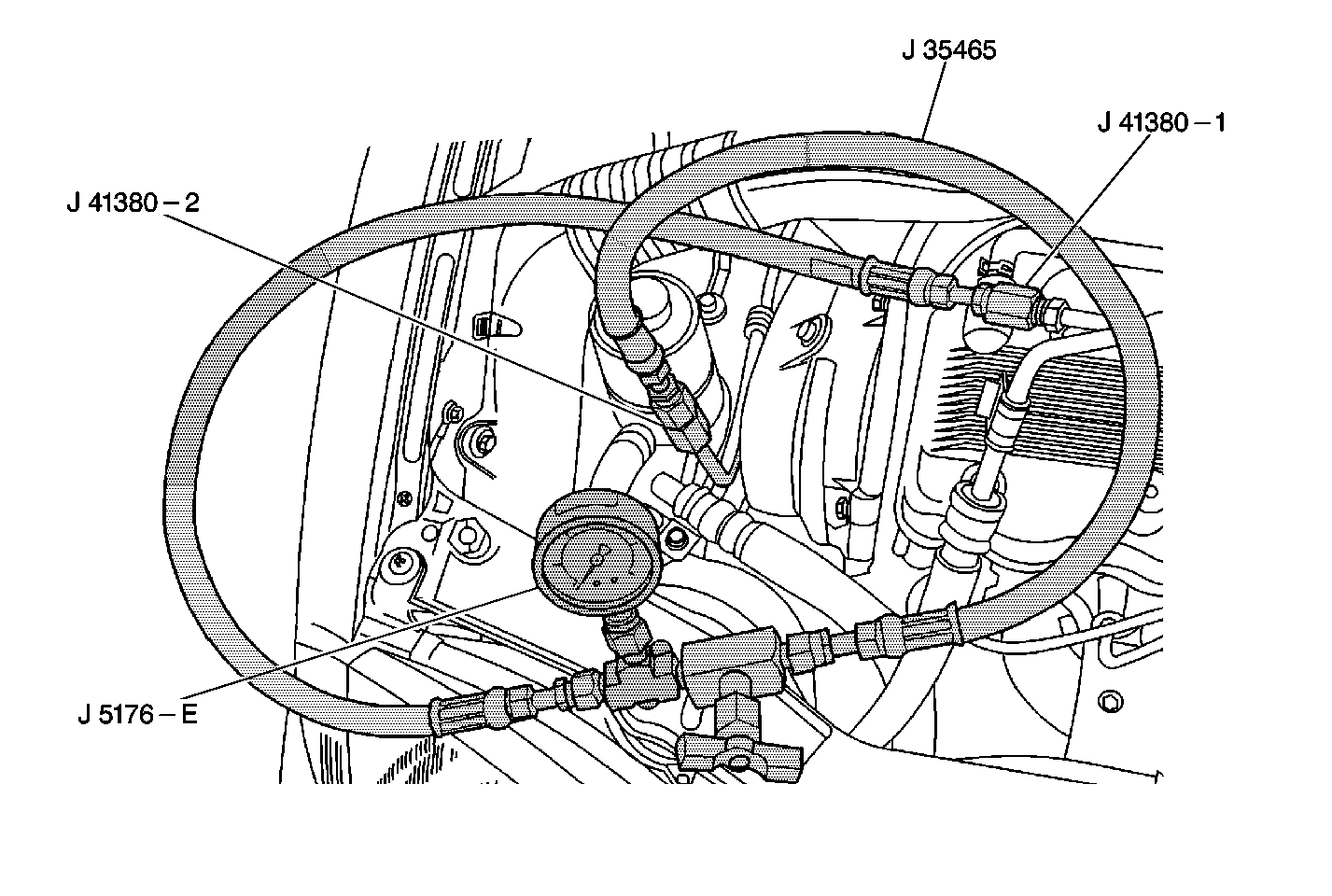For 1990-2009 cars only

Tools Required
| • | J 5176-E Power Steering Pressure Gauge and Hose |
| • | J 35465 Power Steering Pressure Tester Adapter Hose |
| • | J 41380 Power Steering Pressure Tester Adapter Kit |
- Remove the 1 bolt retaining the high pressure hose and the pipe to the core support.
- Disconnect the high pressure hose from the high pressure pipe at the core support.
- Use the J 5176-E , the J 35465 , and the J 41380 , in order to connect the gauge side of the pressure gauge to the pressure hose from the pump.
- Bleed the power steering system. Refer to Power Steering System Bleeding .
- Start the engine.
- Turn the steering wheel from the right stop to the left stop, 2 or 3 times.
- Verify that the fluid level is correct.
- Shut the engine off.
- Verify that the fluid temperature is at least 80°C (176°F).
- Start the engine.
- Run the engine at idle.
- Verify the back pressure.
- Close the valve. Verify the fluid pressure reading.
- Let the engine idle at 1,500 with the valve open.
- Turn the steering wheel to the right or left fully.
- Take a pressure reading. The gauge reading should be no lower than 5700 kPa (825 psi) and no higher than 6700 kPa (924 psi). If the pressure gauge reading is lower than 5700 kPa (825 psi), repair or replace the rack and pinion. If the reading is higher than 6700 kPa (924 psi), repair or replace the relief valve.
Use the J 5176-E , the J 35465 , and the J 41380 , in order to connect the valve side of the gauge to the pressure line to the rack.

With the valve open and the engine idling, the pressure reading should be no more than 980 kPa (142 psi). If the pressure reading is more than 980 kPa, inspect the hoses for restrictions or control valve.
Notice: Do not leave the valve fully closed for more than 5 seconds, or the pump could be damaged internally.
If the pressure gauge reading is below 5700 kPa (924 psi), repair or replace the power steering pump. If the pressure gauge reading is higher than 6400 kPa (924 psi), the possible cause is the malfunction of the relief valve.
